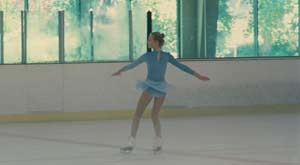 This might sound funny coming from a film critic, but when it comes to movie reviews, I like to make up my own mind. Not that I don’t respect the opinion of critics — I am one, afterall — but an opinion is just that, an opinion, and in the world of film criticism, it seems like there are two types of movie reviews: for the art and for the people.
This might sound funny coming from a film critic, but when it comes to movie reviews, I like to make up my own mind. Not that I don’t respect the opinion of critics — I am one, afterall — but an opinion is just that, an opinion, and in the world of film criticism, it seems like there are two types of movie reviews: for the art and for the people.
I came of this opinion last week when I watched Sofia Coppola’s latest film, Somewhere. Now, I think Coppola is a very talented filmmaker. Her tender touch on Lost in Translation was brilliant, and her original screenplay was well honored with the Academy Award back in 2004.
In that film, Coppola looked at the fickle nature of celebrity and the loneliness of fame through a movie star (Bill Murray) who would seem to have it all but is lost in relationships and a new bride (Scarlett Johansson) who’s being neglected by her husband as he seeks the celebrity of his rising photography career. The film shows the characters’ isolation without beating us over the head and portrays Murray’s movie star as not necessarily lovable but at least vulnerable and sad enough that we feel for him.
Critics applauded the film almost uniformly. On movie critic aggregator Rotten Tomatoes, Lost in Translation has a 94% approval rating based on its reviews, and 84% from the audience.
Fast-forward to Somewhere, released in theaters last year and on DVD and Blu-ray last week, and we see a different story. In this film, Coppola again tackles the subject of the vapid nature of celebrity and the loneliness of being on top, following a movie star (Stephen Dorff) who only finds value in his life when he’s asked to take care of his daughter for a weekend. The difference is, Somewhere sucks. Ok, maybe that’s harsh, but as entertainment, Somewhere just doesn’t, well, entertain.
And yet, it got a 72% approval rating among critics on Rotten Tomatoes — and 48% from the audience. The discrepancy? Art vs. entertainment.
Critics who lean toward film as art liked this film. Critics who are what I call “for the people” didn’t. I’m in the later.
After 20 minutes of this movie, the only thing that had caught my interest was how long Coppola could keep the camera on nothing. I actually found myself stopping and timing scenes. It was much more entertaining. For example:
- 11 minutes in, we watch Dorff sit on the couch smoking a cigarette and drinking a beer for 1 minute and 47 seconds.
- 17 minutes in, we spend 3 minutes and 4 seconds watching Fanning’s ice staking routine — the entire routine. The only way we’d be interested in the whole routine was if this was a movie starring Fanning as a rising ice skater champion or we were Fanning’s parents. Neither is true.
- And the kicker: a little over 30 minutes in, Dorff’s character is sitting for a mold of his head and the camera does a slow pull-in on Dorff’s head covered in plaster for — 1 minute and 32 seconds. This might not sound like a lot, but try sitting watching the same thing for even 30 seconds, no music, no dialog, and a picture that’s not even that interesting. 30 seconds can be really long, and then triple it! Plus, prior to the pull-in we’re treated to about a minute and a half of the makeup artists putting on the plaster. That’s only interesting in a behind-the-scenes featurette, and even then, the entertainment comes from the star telling us how it feels.
That’s not all (the amount of time we see Dorff driving around emotionless, even with the camera looking out the window at the road — not at the actor — is remarkable), but you get the picture.
Ultimately, though, the film fails because … who cares? Unlike Murray’s movie star, Dorff’s has no redeemable characteristics whatsoever. He’s so disinterested in his life, that why should we be interested? And I get that that’s the message Coppola’s so artfully trying to tell, but that’s loud and clear in the first five minutes. In the next hour and 33 minutes, we don’t learn much more. The whole story could have been told in about half an hour, and in a much more interesting way.
Of course, there are plenty of reviewers who disagree. Miami Herald‘s Rene Rodriguez said in his Somewhere review: “The best movie directors aren’t just masters of technical craft. They also are artists capable of showing you the world through their eyes.” (If that’s the case, Coppola’s world must be really boring.)
And our own Irv Slifkin said in his DVD review, “There’s a little bit of La Dolce Vita and The Player amid Ms. Coppola’s cool Antonioni-like deliberations” and gave the film four out of five dishes. (Although he does also admit that “there will be those who will find Somewhere too show.” That’s an understatement!)
But that’s why there are two types of film critics, those who will applaud a movie as long as it’s somewhat artsy — and the fact that it comes from a Coppola can’t hurt — and those who review a film for what it is: entertainment. Both are valid, depending on how you prefer to spend two hours, which is why, as the editor of Disc Dish, I don’t take away from Irv’s Somewhere review even though I disagree with it.
As a “for the people” reviewer, though, I want to hear what you think.
Have you seen Somewhere? Which reviewer did you agree with it, for the art or for the people?



Sucks is exactly the correct word. I enjoy film as an art for and for entertainment and it didn’t work in either category.